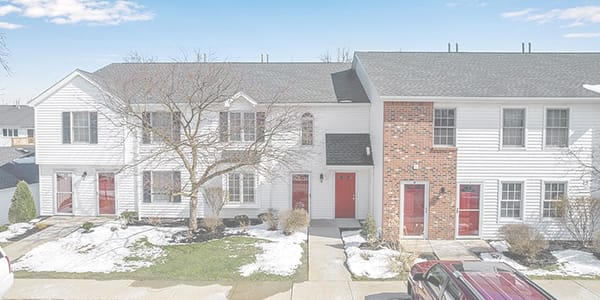2024 has not delivered much financial relief. Money continues to be tight and everyone is feeling the pinch. Naturally, organizations are looking for new and creative ways to save or generate money, and governed communities are no different.
Condo and HOA members may be considering wealth-building initiatives including charging for visitor parking, upgrading to more energy-efficient lighting and power systems, or perhaps even getting rid of underused amenities.
Table of contents
- Duty to maintain common area amenities
- Is it possible to remove a common area amenity?
- Even if you don’t need a vote, consult with owners first
- Just because you can remove a pool doesn’t mean you should
- Looking at other options
One such condo owner reached out for advice on a popular community forum to get a better idea of how beneficial it would be to remove a community pool. Someone else asked about dismantling a tennis court.
Could removing costly amenities pay off? We’ll explore the feasibility of removing community amenities in this article.
Duty to maintain common area amenities
Associations have an obligation to maintain amenities. Maintenance includes inspecting, assessing and repairing these areas. While the association must address an unexpected problem like a leak in the pool or a wobbly handrail, it must also practice preventative or scheduled maintenance.
Preventative maintenance increases the useful life of amenity components, and can help minimize repair costs too. Furthermore, it decreases the chances of someone getting hurt while using the amenity.
Conversely, if the board does not keep up with maintenance, an owner could rightfully bring a lawsuit against the association.
The manner, frequency and extent to which maintenance responsibilities are performed is usually outlined in the declaration and bylaws.
A well-maintained community increases owner satisfaction and increases the value of the properties within the community, too.
Is it possible to remove a common area amenity?
Yes, it is possible to remove a common area amenity. In many cases where this question is up for debate, communities will be looking to get rid of an outdoor pool because it costs a lot of money to maintain. Plus, communities located in 4-season states only get to use the pool for a quarter of the year.
Tennis courts may also be put on the chopping block if they are underused. They take up a lot of space and can be costly to maintain once they start getting old.
That being said, it also takes a lot of work and money to get rid of an amenity. Unfortunately, while governing documents require boards to preserve components in perpetuity, they offer little direction for instances where components are no longer useful or affordable.
Even if you don’t need a vote, consult with owners first
Removing a common area amenity is likely going to be classified as a capital improvement project. After all, it will take considerable funds to remove an inground pool or tennis court, and the association will need to replace the old amenity with something else.
Generally speaking, a project of this significance will require a vote from members, but that is not always the case. Here’s why it can be challenging to determine whether the board has the authority to remove an amenity without a vote.
Some states place restrictions on a board’s ability to spend community funds to make capital improvements without owner consent. But, if that’s not the case, the board can determine whether a vote is needed or not.
For example, in California, the board would have authority to eliminate a common area asset provided it acted in good faith and made a decision that accommodated the best interests of the association.
In Virginia, the board would have the ability to remove a pool, but the decision could be overturned by a certain percentage of owners.

However, a condo community in Michigan may need to vote to change the governing documents altogether if there is nothing that addresses authority to remove amenities, suggested a lawyer weighing in on the subject. Amending the governing documents in Michigan takes two-thirds owner approval.
And, even where such provisions are absent, the board would still likely need to obtain membership approval to generate the funds needed to complete the project.
Long story short, board members should consult with owners if there are plans in place to remove a shared amenity. Since owners pay for amenities through dues, they should at least have an opportunity to find out what their options are, and argue for or against the removal of a major community asset.
Furthermore, owners should have the opportunity to vote on the new amenity that will replace the old one. It’s important to decide what will take the place of the old amenity before construction work begins so that contractors can take any special steps needed to prepare the area for the new addition.
Just because you can remove a pool doesn’t mean you should
Removing an old pool might save a community money in the long run, but there are still big costs associated with amenity demolition.
Even if the pool is underused, it’s always an attractive selling feature for potential buyers. If owners lose the feature, they may have to lower sale prices too.
Then there are the resources needed to get rid of the amenity and repair the site. Removing a pool built for a condo or HOA can cost $25,000 or more depending on the size of the pool, what materials were used for the pool, and labor costs.
Removing a tennis court can cost anywhere from $18,000 to $25,000.
The work still isn’t done after the amenity has been hauled away and the earth has been restored. Something has to replace the old amenity, and budget considerations will come into play. Even a green space will require regular landscaping and maintenance.
Not only will installing a new amenity take up additional financial resources, but the board will need to think about usage policies, insurance, etc.
Looking at other options
Reducing costs related to the amenity
Eliminating an amenity outright may not always be the first choice when a condo or HOA is looking to reduce the amount it spends on amenities. It may be possible to reduce related expenses without having to demolish the asset altogether. For example, are there more affordable contractors available to care for the pool? Could the number of guests be limited to reduce wear and tear? Or is it feasible to shorten the pool season to reduce costs?
Loans and special assessments
Alternatively, if the amenity is well-loved by the majority of owners, the condo or HOA could assess the pros and cons of getting a loan and levying a smaller special assessment so that owners aren’t paying large sums of money all at once for the repair work.
Conclusion
It’s still uncommon for a condo or HOA to completely demolish a common area amenity, but it’s not unheard of either. In unique cases, an older amenity simply becomes too expensive to maintain or repair. If the benefits no longer outweigh the costs, then it might be time for the association to make a tough choice.
If your community is in this position, start by consulting with an attorney and contractor who specializes in amenity removals to gain a better sense of what the legal and financial implications will be for your community if it decides to move forward with such a significant project.






















